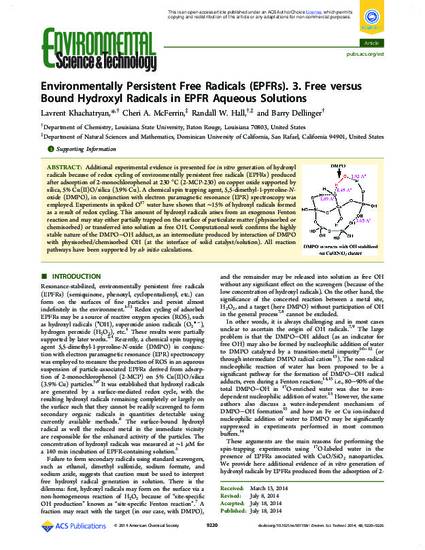
Additional experimental evidence is presented for in vitro generation of hydroxyl radicals because of redox cycling of environmentally persistent free radicals (EPFRs) produced after adsorption of 2-monochlorophenol at 230 °C (2-MCP-230) on copper oxide supported by silica, 5% Cu(II)O/silica (3.9% Cu). A chemical spin trapping agent, 5,5-dimethyl-1-pyrroline-N-oxide (DMPO), in conjunction with electron paramagnetic resonance (EPR) spectroscopy was employed. Experiments in spiked O17 water have shown that ∼15% of hydroxyl radicals formed as a result of redox cycling. This amount of hydroxyl radicals arises from an exogenous Fenton reaction and may stay either partially trapped on the surface of particulate matter (physisorbed or chemisorbed) or transferred into solution as free OH. Computational work confirms the highly stable nature of the DMPO–OH adduct, as an intermediate produced by interaction of DMPO with physisorbed/chemisorbed OH (at the interface of solid catalyst/solution). All reaction pathways have been supported by ab initio calculations.
Copyright © 2014 American Chemical Society. Terms of use.
Available at: http://works.bepress.com/randall_hall/75/
